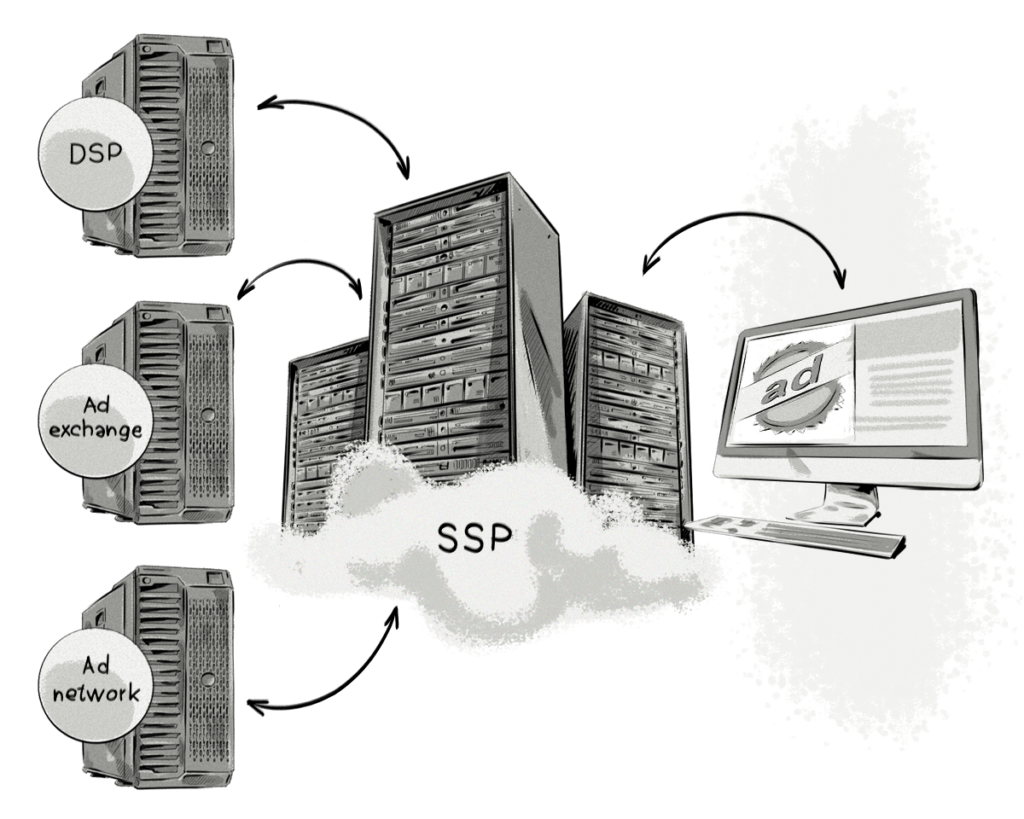We’ve become as familiar with the digital world as with the real one. Finding information, chatting with friends, reading news, and many more – all of these have been rapidly moving towards the virtual setting. This makes online advertising extremely crucial for marketers – a majority of the audience will more likely see their advertisements online than in the real world. Yet, how to post marketing materials with the abundance of websites available on the whole internet? With SSPs and DSPs. Therefore, in this article, we’ll focus on the SSP’s and DSP’s meaning: what are these platforms and what role do they play? Read on to find out.
SSP’s and DSP’s Meaning Explained

Source: clearcode.cc
Let’s begin by deciphering what hides behind these abbreviations.
SSP stands for supply-side platform. It is used for those who have digital advertising space, e.g. website owners, to post their inventory and sell it automatically without the need to contact advertisers directly. Moreover, it gives them the opportunity to reach out to a larger customer base, thus increasing their income.
DSP’s meaning is: a demand-side platform. It is a system designed for advertisers to purchase advertising space automatically, without the need to contact the sellers. Instead of just presenting advertisers with offers, it enables them to set several parameters, such as the target audience or budget of their campaign. Afterward, the platform finds suitable advertising space, bids for it, and publishes ads automatically.
The Role of SSP and DSP
Both SSPs and DSPs form the system for modern, digital advertising. They are relatively the same but created for two different sides of the process. But, are they really crucial? The answer is: yes.
The first aspect that makes SSP’s and DSP’s meaning so significant is its targeting. The market currently is heavily customer-centric and the platforms fit in the mold perfectly. Ad space is sold based on who the users seeing the advertisements are, rather than its localization. This way marketers may approach only their target audience, increasing the ROI of their marketing campaigns, while site owners can harvest more income for selling their space.
The second crucial feature of the platforms is their speed. Acting on trends has always been important, but nowadays they change so rapidly that anyone who hesitates may be too late. If marketers and advertising space owners were to negotiate with each other through e-mails, calls, or text messages, it would be impossible to place advertisements quickly, thus reaping the harvest of the hot topics. But, with these types of platforms live, this is not an issue since everything is done automatically.

Source: europeanbusinessreview.com
The Takeaway
What’s the meaning of SSP and DSP? The former stands for supply-side platform used by advert inventory owners to sell their advertising space; the latter is the abbreviation for demand-side platform utilized by marketers to purchase advertising space. Together, they form a system of digital advertising much more efficient than traditional measures could ever be.



